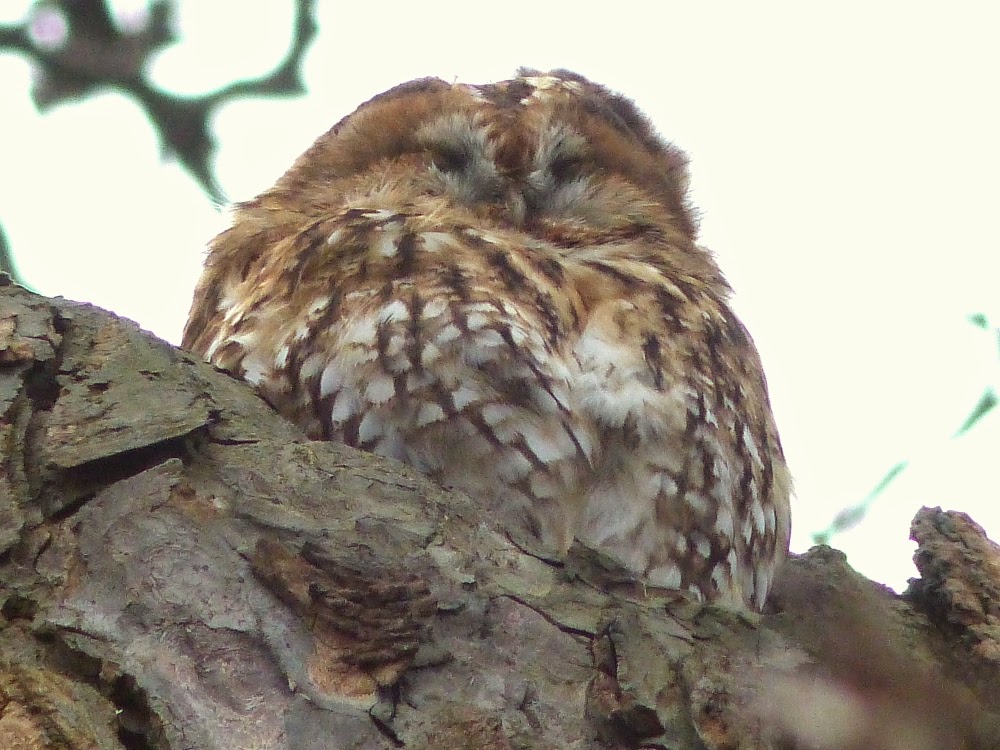There was a strong west wind and the Tawny Owl was looking very ruffled in his exposed position on the horse chestnut tree.
The dead leaves on the Serpentine had collected at the downwind end, mixed with milky froth. In this unpromising mixture a Coot had found something green to eat.
Some Feral Pigeons and Black-Headed Gulls had also found something green, a mixed vegetable curry. It is astonishing what food people give to the birds. But they liked it, and a young Herring Gull muscled in for its share.
Birds are not bothered by chilli, as they can't taste its hot principle, capsaicin. This is a neat bit of evolution. The seeds of the chilli plant pass through a bird's swift digestive system undamaged, and thus are spread around. A mammal's more thorough digestive system would kill them. By producing a substance that it harmless to birds but causes mammals pain, the plant ensures that its seeds are spread in a viable condition. In a further refinement, ripe chilli pods advertise themselves by being red, a colour that birds can see but most mammals can't.
On the Archery Field a Mistle Thrush had found what I think is a leatherjacket, a crane fly larva. Sorry about this mediocre picture, which was taken from over 50 yards away.
A skein of Greylag Geese arrived on Buck Hill to enjoy the lush grass.
A couple of crows near the Diana memorial playground were bickering mildly over a tattered empty paper bag.
In the words of Samuel Beckett in Waiting for Godot ...
VLADIMIR: That passed the time.
ESTRAGON: It would have passed in any case.
This mushroom was one of a small group growing on the long strip of grass at the north edge of Kensington Gardens just west of Lancaster Gate. I photographed it and looked it up in the best online identification guide, and completely failed to find what it is.








Ralph, I didn't realise that birds had 'fancy' breeding plumage and more subdued 'off season' plumage, until I started reading your blog. Our greenfinches look very dull at the moment. Will they brighten up for the summer? Or am I just getting them muddled with another similar but more muted finch?
ReplyDeleteYes, male Greenfinches do get brighter in the spring. So do Chaffinches. But it isn't a radical transformation, as with some birds.
DeleteOh thanks very much for that. I must keep a close eye on further developments at the bird feeders! Our robin looked glorious today in the winter sun - his little orange chest puffed out and glowing!
DeleteThe mushroom is a Twiglet, Tubaria probably furfuracea.
ReplyDeleteMario
Thanks very much for the identification.
Delete